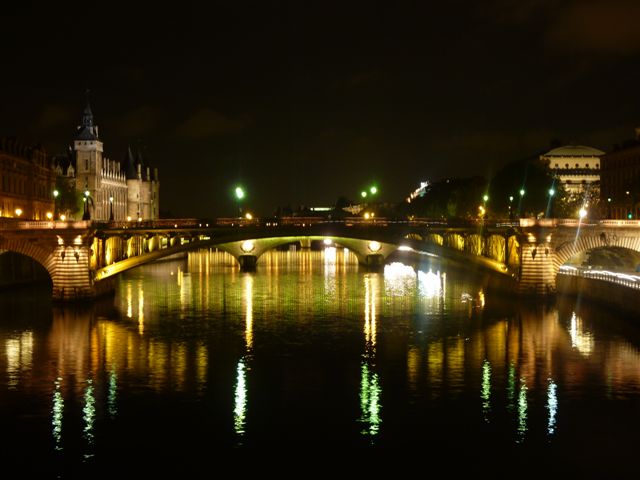Hands-on with the Panasonic Lumix DMC-ZS3: Wide-angle compact camera, 12x zoom

Being an avid traveler who likes to pack light, I'm always on the lookout for a flexible, feature-rich point-and-shoot camera in a compact package. I was intrigued by the Panasonic Lumix DMC-ZS3 when it was first announced, and after shooting with one for two weeks, I'm sold.
Until now, my point-and-shooters of choice had been the wide-angle Canon Digital Elphs (like the PowerShot SD960 IS and its predecessors, the SD880 IS and SD870 IS) or the Panasonic wide-angle compacts (the Lumix DMC-FX48 and its predecessors, the FX37 and FX35). I've always liked the idea of a megazoom, but was never willing to sacrifice pocketability for the extra focal length. And to be honest, when I first took the ZS3 out of its box, I was skeptical about the heft. It was compact and slim for a megazoom, certainly, but I doubted it was trim enough to be the all-purpose camera I'd toss in my pocket every day.
I was wrong.
After spending two weeks with it in my pocket (figuratively, as well as literally during a five-day jaunt to Paris), the ZS3 has redefined what pocketable means to me. I never felt encumbered by it and never felt that I was putting up with bulk for the sake of the zoom.
Let me break in here with a few basic specs for those of you who are unfamiliar with the ZS3: 10.1 megapixels; 25-300mm equivalent, f/3.3-4.9 12x zoom lens; 3-inch LCD; AVCHD Lite HD video.
Okay, where was I? Oh, yes, the pocketability. The ZS3's main competition, the Canon PowerShot SX200 IS, is slightly bigger at 4.06×2.38×1.48 inches, 7.76 ounces vs. the ZS3's 4.07×2.35×1.29-inch, 7.3-ounce physique. But the bigger deal to me is the ZS3's wider angle lens (25-300mm vs. the PowerShot's 28–336mm). The difference between 25mm and 28mm may not seem like much, but it allows you to capture significantly more in a scene.
Speaking of scenes, I found the ZS3's 27 scene modes to be quite effective (and necessary, since one of the drawbacks of this camera is a dearth of manual controls--unlike the SX200 IS). The image above was a zoomed in hand-held shot using the Night Scenery scene mode. I don't have a particularly steady hand, so there's some decent image stabilization going on there as well.
While the ZS3 offers 11-area Auto Focus, I actually got better results using the 1-area AF mode selection at times. As with the ZS3's fancy face-recognition technology (which remembers faces that you’ve shot before and allows you to register them for focus and exposure priority), I found some of these technology bells and whistles a bit useless in real life--I'd actually rather see the camera drop some of the "advanced" features and come out at a lower price, but in this hypercompetitive camera market, it ain't bloody likely.
I do like the advanced, high-resolution (460,000 dots), 3-inch LCD, which is a treat to shoot and play back images with. It's bright and crisp, and viewing angles are good, making it easier to get awkward shots (e.g., with the camera held high over your head, or low down). Lori Grunin over at CNET found the LCD to be reflective in direct sunlight, but I didn't experience that--in fact, I found the LCD surprisingly easy to use in the sun. I didn't even use the (battery-sucking) LCD gain feature that boosts brightness for easier use in sunlight.
I'll leave the serious image-quality analysis to the lab testers (read reviews here), but generally speaking, I was quite pleased with my shots in a variety of settings (though don't expect anything spectacular at high ISO--it's only a 1/2.33-inch sensor after all). Interestingly, the ZS3 has a 12.7-megapixel CCD, but shoots a maximum effective resolution of 10.1 megapixels so you can capture images with 4:3, 3:2, and 16:9 aspect ratios simultaneously, with the same angle of view (at anywhere from 25mm to 300mm).
Overall, I found my hands-on experience with the ZS3 to be a pleasure--so much so that it's likely to become my go-to recommendation for a general-purpose point-and-shoot (for those who can stomach the $400 price, of course). I haven't yet played with the ZS3's junior sibling, the Lumix DMC-ZS1 (which sells for $100 less), and though I'm fine with the ZS1's 10.3-megapixel CCD, lack of face-recognition technology, and standard-def video, I'm not sure if I'm willing to drop down to its 2.7-inch, 230,000 LCD.
